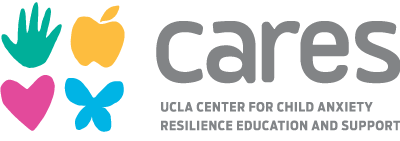Strategies for Teachers
back to Resources for Teachers
Teachers can play significant roles in the lives of children facing the challenges of stress and anxiety. Because teachers typically spend a great deal of time with children, they may be the first to become aware of a child’s anxiety symptoms. Also, there are children who have anxiety symptoms that manifest more prominently in the school environment, so a teacher may become aware of the existence of symptoms that a parent has not noticed. Lastly, in some cases, anxiety may be related to learning problems or academic challenges. In this situation, teachers or other school personnel should remain involved in the management of the anxiety issue. In all cases, when teachers notice significant stress and anxiety with their students, they should inform the parents.
How You Can Help
While teachers are not expected to provide behavioral health treatment, there are strategies for the classroom that can be helpful in preventing and addressing the impact of anxiety on students.
Anxiety in children is often more noticeable during periods of transition (e.g., the start of the school day, the time before, during, or after lunch and recess, etc.), and during unstructured time. Uncertainty can often make a child’s anxious feelings worse, causing the child to become resistant or withdrawn. Preparing children for transitions or changes in the schedule before they occur can relieve some of their stress and cue them to engage in self-soothing behaviors or other coping strategies in advance. In addition, developing specific classroom routines around everyday activities (and advising children of changes ahead of time) can help anxious children feel less overwhelmed by feelings of uncertainty and concern around future activities.
Strategies
- Talk through the schedule, especially when there are changes, so students feel prepared for what is coming next.
- Develop routines around everyday activities and transition periods during the school day. This might include completing a short game or familiar task at the start of each day.
Understanding Anxious Behavior
It is important for teachers to be aware that on occasion, anxiety symptoms can result in a child’s being reluctant or unable to comply with classroom instructions. This behavior may be indistinguishable from oppositional or defiant behavior but should not merit the same response. Careful questioning and observation can usually determine what motivates a student’s failure to comply.
Taking time to consider the reason behind a child’s behavior can help you develop a plan for working with them. If a child’s anxiety makes it difficult for them to complete an assignment or task as initially requested, consider altering the original task to make it more manageable for him or her. Check with parents; some students may already have anxiety plans with their parents or caregivers that help them cope when they feel especially stressed. These plans might include taking a few deep breaths, having a drink of water, or taking a short break from the classroom. If you think a child is dealing with anxiety, checking in with their family about such a plan can be helpful for ensuring classroom success. If the family does not have any plans in place, consider referring them to the school psychologist or other mental health professional for additional guidance.
It is important not to suggest complete avoidance of work or tasks, nor to remove children with anxiety from classroom activities needlessly. This is called “accommodation,” and it promotes continued avoidance of feared situations, which allows anxiety to become even more entrenched. Instead, work with students to find ways for them to participate. For example, if a child’s anxiety interferes with their ability to deliver an oral presentation to the whole class, this task can be modified to allow the student to deliver the presentation to a smaller group, or to record the presentation and present the recording.
Talking to Parents
If you have a student who may be dealing with anxiety, it is important first to connect with their parents or caregivers regarding your concerns. Doing so can help you learn what they might already be doing to help their child cope.
Here are some tips to keep in mind when talking with parents about childhood anxiety:
- Don’t make assumptions about whether or not the family is aware of the issue. Be sensitive to the possibility that the parent(s) may express distress or guilt if they had been unaware.
- Talk about behaviors you have observed and what the child may have shared, but avoid interpreting the causes of behaviors.
- Make it clear that you want them to be aware of your observations but that you are not suggesting that their child has a disorder or problem. Do not imply that you are qualified to diagnose or treat their child.
- Keep the discussion focused on the school setting.
- When discussing potential solutions, do your best to come across as collaborative, not judgmental.
Working together with parents is a key part of supporting students who may be dealing with anxiety in the classroom.
Summary
- If a child’s behavior is affecting their learning or participation in the classroom, check in with the parent(s) or caregiver about whether they have any strategies in place for dealing with the child’s symptoms. If so, discretely help the child use these strategies.
- If a child with anxiety is unable to complete a task as assigned, it is better to modify the task then to allow him or her to avoid it altogether.
- Sometimes a child may benefit from “rehearsing” activities (e.g., oral presentations) that cause anxiety.
